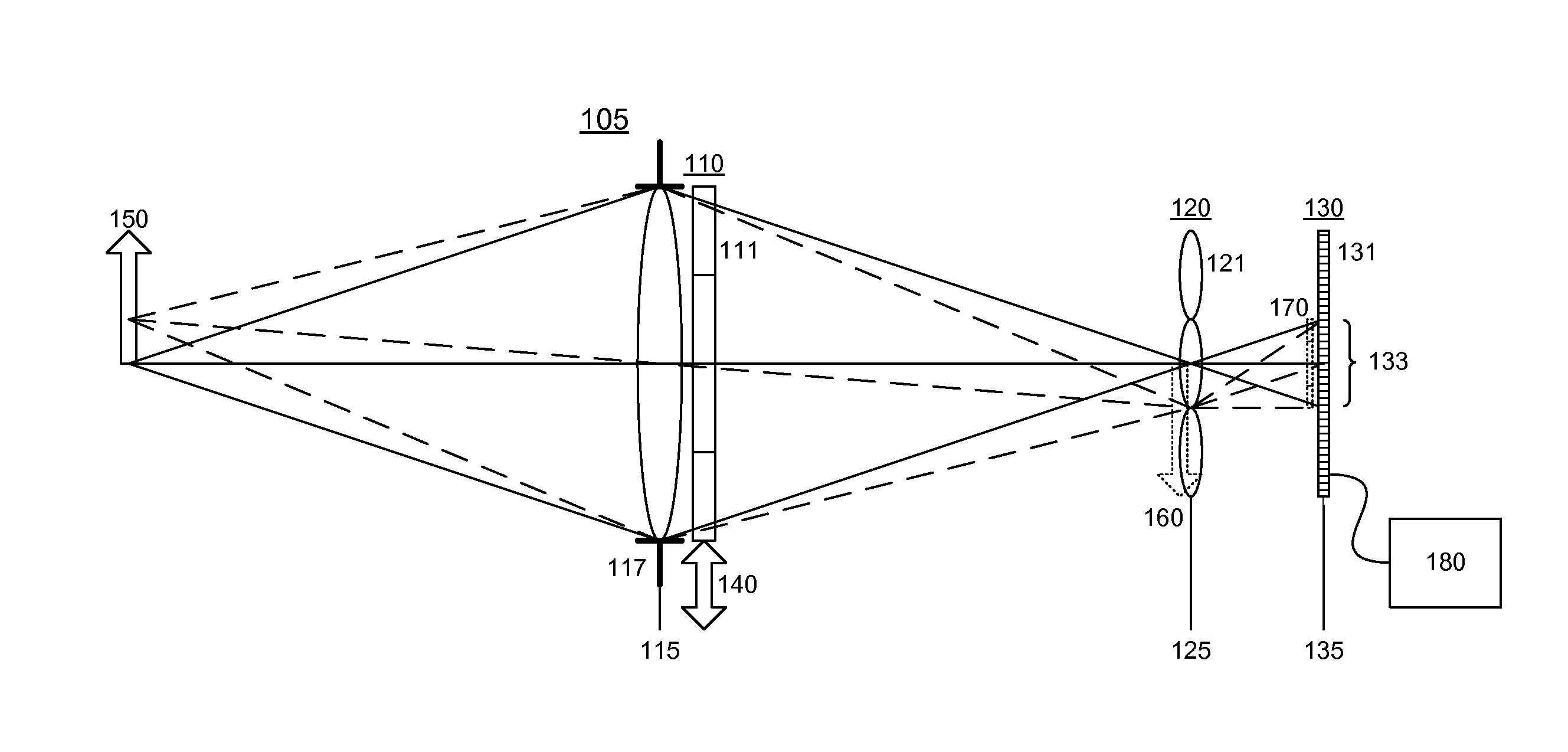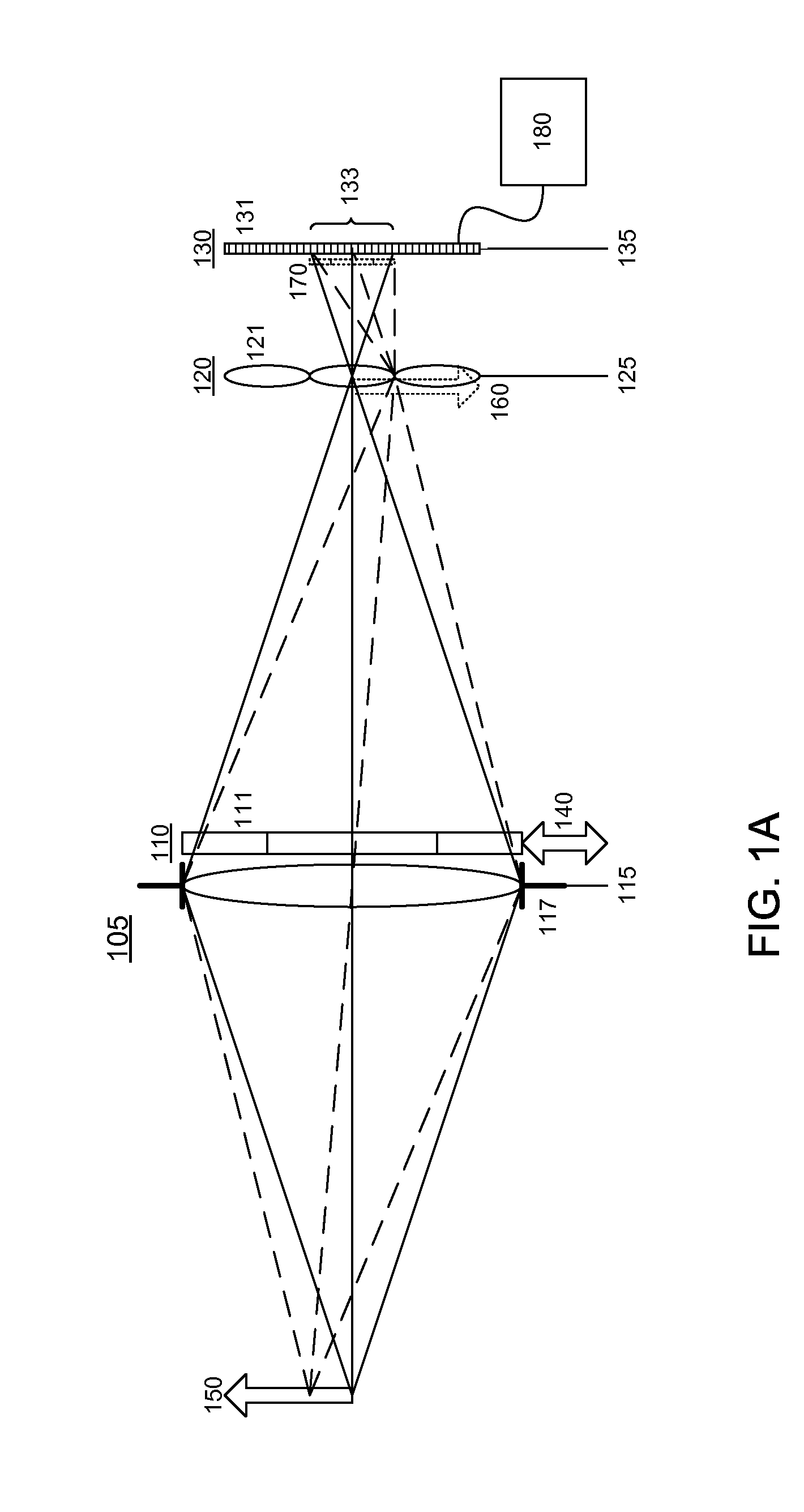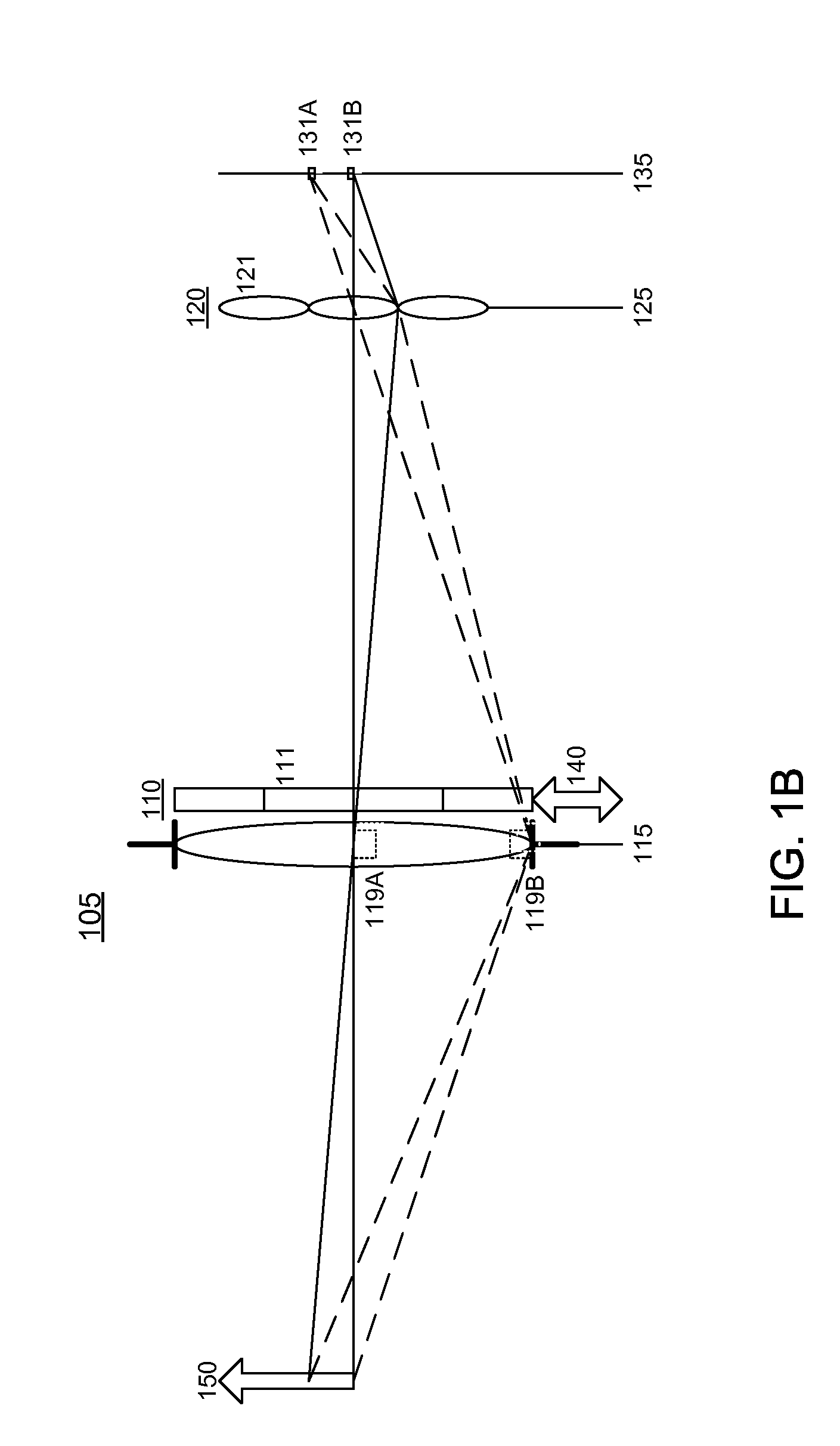Adjustable multimode lightfield imaging system having an actuator for changing position of a non-homogeneous filter module relative to an image-forming optical module
a multi-mode lightfield imaging and actuator technology, applied in the field of multi-mode imaging systems, can solve the problems of large and complex systems, difficult to acquire additional information, and difficult to capture the second spatial dimension of objects
- Summary
- Abstract
- Description
- Claims
- Application Information
AI Technical Summary
Benefits of technology
Problems solved by technology
Method used
Image
Examples
Embodiment Construction
[0026]FIGS. 1A-1C are diagrams of an adjustable multimode lightfield imaging system according to the invention. The system captures a multimode image of an object 150. The multimode lightfield imaging system includes an image-forming optical module 105, which in FIG. 1 is represented by a single lens element although it is understood that the optical module 105 could contain multiple elements and / or non-lens elements (e.g., mirrors). The optical module 105 forms an optical image 160 of object 150. The optical image 160 is formed at an image plane 125 of the optical module 105. The optical module 105 has an aperture 117 and aperture plane 115, which in FIG. 1 is represented by an aperture stop co-located with the single lens element. In more complex optical modules 105, the aperture 117 and aperture plane 115 need not be co-located with any of the optical elements within the optical module.
[0027]In a conventional imaging system, a detector array would be located at image plane 125 to...
PUM
 Login to View More
Login to View More Abstract
Description
Claims
Application Information
 Login to View More
Login to View More - R&D
- Intellectual Property
- Life Sciences
- Materials
- Tech Scout
- Unparalleled Data Quality
- Higher Quality Content
- 60% Fewer Hallucinations
Browse by: Latest US Patents, China's latest patents, Technical Efficacy Thesaurus, Application Domain, Technology Topic, Popular Technical Reports.
© 2025 PatSnap. All rights reserved.Legal|Privacy policy|Modern Slavery Act Transparency Statement|Sitemap|About US| Contact US: help@patsnap.com



